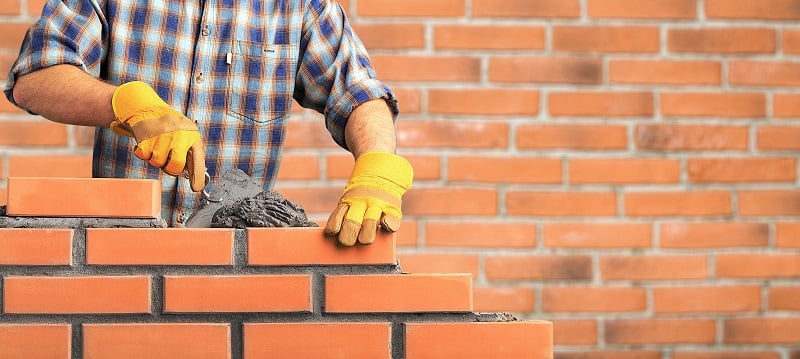Dependable Tuckpointing Services for Restoring Block and Stone Surfaces
Dependable Tuckpointing Services for Restoring Block and Stone Surfaces
Blog Article
Unlocking the Keys of Sustainable Stonework Building Practices for Eco-Friendly Structures
In the realm of modern-day building, the search of lasting techniques has actually become paramount. Amongst the myriad strategies to environment-friendly building, lasting masonry construction attracts attention as a tried and true and long lasting approach that holds a wealth of untapped possibility. From the choice of materials to ingenious construction strategies, the keys to accomplishing sustainability within stonework building are complex and interesting. By checking out the advantages, products, techniques, and future trends of sustainable masonry, a deeper understanding of exactly how these practices can form the future of environmentally friendly buildings arises.
Advantages of Lasting Masonry Building
Embracing sustainable stonework construction methods not only reduces ecological effect however also uses long-lasting financial benefits to building contractors and communities. By making use of products like recycled blocks, blocks, and stones, builders can significantly decrease the carbon footprint of their jobs while advertising resource performance. Additionally, sustainable masonry building strategies, such as proper insulation and thermal mass properties, can improve power performance within structures, resulting in decreased operational prices in time.
Furthermore, the resilience and strength of masonry frameworks add to long-term economic benefits. Buildings created utilizing lasting masonry techniques typically call for much less maintenance and fixing, translating to set you back financial savings for builders and home owners. The durability of stonework products also makes certain that structures remain stable and safe, reducing the demand for constant remodellings or substitutes.
Eco-Friendly Masonry Materials
Making use of eco-friendly stonework materials is a pivotal step in the direction of boosting the sustainability of building techniques and lessening ecological impact while making the most of lasting economic benefits. Sustainable stonework materials are sourced, created, and used in a way that minimizes overall ecological impact. Products such as recycled bricks, redeemed rock, and lasting cinder block are coming to be increasingly prominent choices for eco-conscious home builders. Recycled bricks, as an example, not only divert waste from land fills but likewise call for much less energy to generate contrasted to brand-new blocks. Redeemed stone supplies a special visual allure while decreasing the requirement for brand-new quarrying. Sustainable concrete obstructs include recycled accumulations and may feature better insulation homes, adding to power performance in structures.
In addition, all-natural materials like adobe, rammed planet, and straw bales provide exceptional thermal mass homes, decreasing the demand for heating and cooling down energy. These materials are frequently locally readily available, promoting local economies and lowering transportation-related carbon exhausts. By selecting eco-friendly masonry materials, building jobs can significantly lower their ecological footprint and add to the creation of much healthier, more lasting constructed atmospheres.
Energy-Efficient Stonework Methods
Power effectiveness plays a vital role in boosting the sustainability of masonry building methods. By executing energy-efficient masonry methods, contractors can dramatically lower the overall energy intake of a building, causing reduced operational costs and a smaller environmental impact. One vital energy-efficient masonry method is using thermal mass, which includes incorporating dense materials like concrete or brick into the structure's framework to absorb and save warm. This kirby stamped concrete helps manage indoor temperature levels, reducing the requirement for mechanical home heating and cooling down systems.

Innovations in Lasting Masonry
Recent advancements in sustainable masonry practices have brought about cutting-edge techniques that are improving the building market. One such advancement is the advancement of self-healing concrete, which uses bacteria embedded within the concrete to recover fractures autonomously. This innovation not only reduces upkeep expenses but additionally boosts see here now the sturdiness of stonework structures, contributing to their sustainability.
Another notable development is the usage of recycled aggregates in masonry construction - masonry contractor. By including materials such as crushed ceramic waste or recycled glass right into concrete blends, contractors can reduce the environmental influence of construction tasks while preserving architectural stability. This method not only draws away waste from garbage dumps but likewise preserves natural deposits, making it a key improvement in sustainable stonework building and construction
Moreover, the assimilation of digital design tools, such as Building Details Modeling (BIM), is changing the method stonework structures are prepared and created. BIM permits for more accurate computations, decreased product wastefulness, and boosted energy efficiency, inevitably leading to even more sustainable structure methods. These advancements jointly symbolize an appealing future for sustainable stonework building and construction in the age of environment-friendly buildings.
Future Trends in Stonework Sustainability
With the cutting-edge strides made in lasting masonry techniques, the future fads in stonework sustainability are positioned to more revolutionize the building and construction market. One of the vital fads forming the future of stonework sustainability is the raised integration of innovation. Innovations such as Building Info Modeling (BIM) and online truth simulations are being utilized to maximize masonry construction procedures, leading to lowered product waste and boosted power effectiveness in structures.
Moreover, the growth of unique sustainable products is readied to play a substantial duty in boosting the eco-friendliness of stonework building. masonry contractor. Advancements like self-healing concrete, recycled aggregates, and bio-based binders are obtaining grip for their capability to minimize environmental impact while preserving structural honesty

Verdict
In conclusion, lasting stonework building methods supply countless benefits for environment-friendly structures. masonry contractor. Developments in sustainable masonry are continuously being established to even more boost the ecological performance of buildings.
Report this page